- Region
- Águilas
- Alhama de Murcia
- Jumilla
- Lorca
- Los Alcázares
- Mazarrón
- San Javier
-
ALL AREAS & TOWNS
- AREAS
- SOUTH WEST
- MAR MENOR
- MURCIA CITY & CENTRAL
- NORTH & NORTH WEST
- TOWNS
- Abanilla
- Abarán
- Aguilas
- Alamillo
- Alcantarilla
- Aledo
- Alhama de Murcia
- Archena
- Balsicas
- Blanca
- Bolnuevo
- Bullas
- Cañadas del Romero
- Cabo de Palos
- Calasparra
- Camping Bolnuevo
- Campo De Ricote
- Camposol
- Canada De La Lena
- Caravaca de la Cruz
- Cartagena
- Cehegin
- Ceuti
- Cieza
- Condado de Alhama
- Corvera
- Costa Cálida
- Cuevas De Almanzora
- Cuevas de Reyllo
- El Carmoli
- El Mojon
- El Molino (Puerto Lumbreras)
- El Pareton / Cantareros
- El Raso
- El Valle Golf Resort
- Fortuna
- Fuente Alamo
- Hacienda del Alamo Golf Resort
- Hacienda Riquelme Golf Resort
- Isla Plana
- Islas Menores & Mar de Cristal
- Jumilla
- La Azohia
- La Charca
- La Manga Club
- La Manga del Mar Menor
- La Pinilla
- La Puebla
- La Torre
- La Torre Golf Resort
- La Unión
- Las Palas
- Las Ramblas
- Las Ramblas Golf
- Las Torres de Cotillas
- Leiva
- Librilla
- Lo Pagan
- Lo Santiago
- Lorca
- Lorquí
- Los Alcázares
- Los Balcones
- Los Belones
- Los Canovas
- Los Nietos
- Los Perez (Tallante)
- Los Urrutias
- Los Ventorrillos
- Mar De Cristal
- Mar Menor
- Mar Menor Golf Resort
- Mazarrón
- Mazarrón Country Club
- Molina de Segura
- Moratalla
- Mula
- Murcia City
- Murcia Property
- Pareton
- Peraleja Golf Resort
- Perin
- Pilar de la Horadada
- Pinar de Campoverde
- Pinoso
- Playa Honda
- Playa Honda / Playa Paraíso
- Pliego
- Portmán
- Pozo Estrecho
- Puerto de Mazarrón
- Puerto Lumbreras
- Puntas De Calnegre
- Region of Murcia
- Ricote
- Roda
- Roldan
- Roldan and Lo Ferro
- San Javier
- San Pedro del Pinatar
- Santiago de la Ribera
- Sierra Espuña
- Sucina
- Tallante
- Terrazas de la Torre Golf Resort
- Torre Pacheco
- Totana
- What's On Weekly Bulletin
- Yecla


- EDITIONS:
 Spanish News Today
Spanish News Today
 Alicante Today
Alicante Today
 Andalucia Today
Andalucia Today
Museo Arqueológico Comarcal de Orihuela
Municipal Archaeological Museum, Orihuela
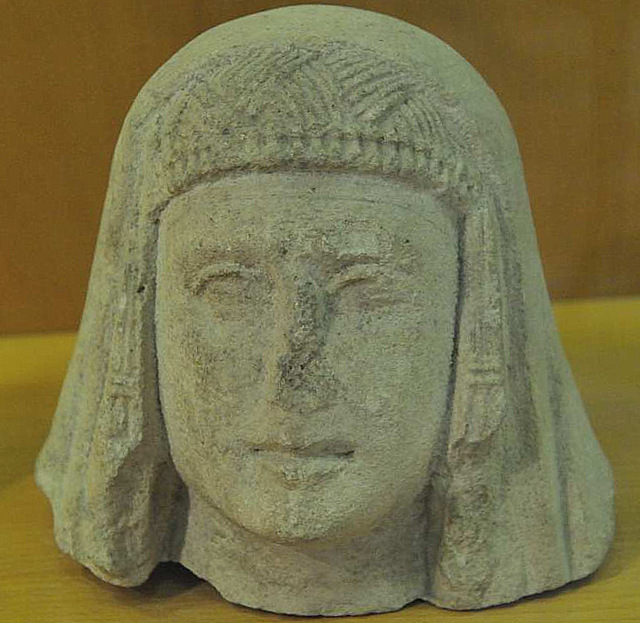 The Municipal Archaeological Museum of Orihuela, also known as “MARQCO”, is currently housed in the former Church of San Juan de Dios, which was built in the mid-eighteenth century and formed part of the complex of the Hospital San Juan de Díos, run by the Orden Hospitalaria de San Juan de Dios until the 19th century. The building itself is divided into two parts: the hospital and convent, then the church itself. Construction concluded in 1755.The museum is fairly companct so will take less than half an hour to visit as part of a scheduled route.
The Municipal Archaeological Museum of Orihuela, also known as “MARQCO”, is currently housed in the former Church of San Juan de Dios, which was built in the mid-eighteenth century and formed part of the complex of the Hospital San Juan de Díos, run by the Orden Hospitalaria de San Juan de Dios until the 19th century. The building itself is divided into two parts: the hospital and convent, then the church itself. Construction concluded in 1755.The museum is fairly companct so will take less than half an hour to visit as part of a scheduled route.
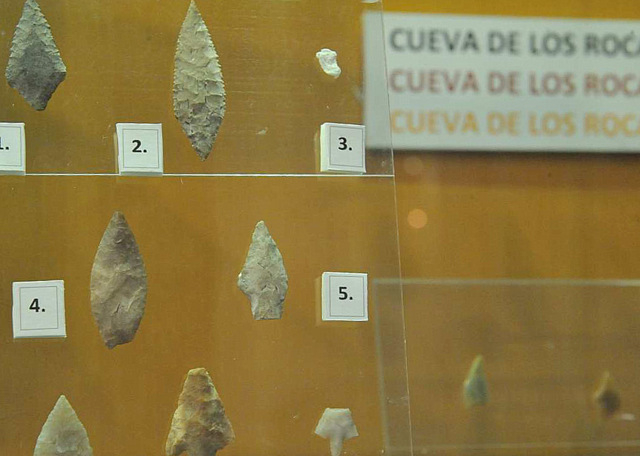 Some of the exhibits were inherited from the collection of Jesuit priest Julio Furgús in the Colegio Santo Domingo, and the collection now on display is a representative selection of materials from the Paleolithic to the early 19th century. These include artifacts found by Father Furgús himself, as well as material from the many sites both beneath the existing city and in the rural areas surrounding Orihuela.
Some of the exhibits were inherited from the collection of Jesuit priest Julio Furgús in the Colegio Santo Domingo, and the collection now on display is a representative selection of materials from the Paleolithic to the early 19th century. These include artifacts found by Father Furgús himself, as well as material from the many sites both beneath the existing city and in the rural areas surrounding Orihuela.
 There is representative material from every era, beginning with prehistory, and the Neolithic with the La Berna site in modern day Rojales, La Algueda in Albatera, the caleolithic Cueva de los Roca, Las Espeñetas in Orihuela itself, the Cueva de San Antonio de Padua and the necropolis de Algorfa. Bigastro was a Bronze Age settlement, then the Iberians occupied San Antón, Los Saladares, Cerro de los Santos and Campos de Silos between the 6th and 1st centuries BC, before the invasion of the Romans resulted in the loss of their culture as an identifiable body of people.
There is representative material from every era, beginning with prehistory, and the Neolithic with the La Berna site in modern day Rojales, La Algueda in Albatera, the caleolithic Cueva de los Roca, Las Espeñetas in Orihuela itself, the Cueva de San Antonio de Padua and the necropolis de Algorfa. Bigastro was a Bronze Age settlement, then the Iberians occupied San Antón, Los Saladares, Cerro de los Santos and Campos de Silos between the 6th and 1st centuries BC, before the invasion of the Romans resulted in the loss of their culture as an identifiable body of people.
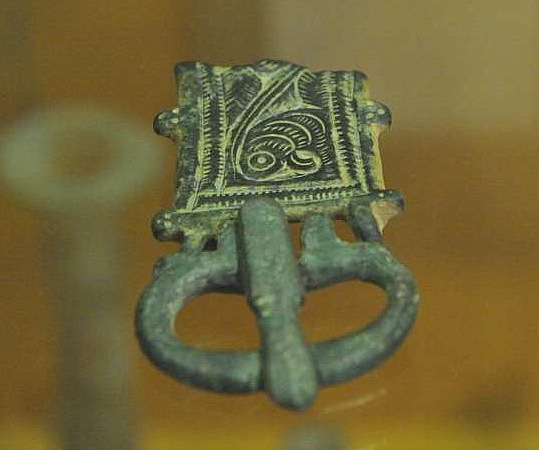 The exhibits move through the centuries to the Roman settlements at El Mojón and Pilar de la Horadada, followed by the Visigoths ( there is a particularly fine belt buckle) and then the invasion of Islamic forces in the 8th century. There are further exhibits dedicated to the mediaeval era following the expulsion of the Moors, with a fascinating mixture of historical items on display, including Islamic decorative stonework and tombs, Roman mosaics, Argaric daggers, axes, goblets and millstones, Iberian ceramics and the “Orihuela Tombstone”, a Hebrew relic from the sixth century.
The exhibits move through the centuries to the Roman settlements at El Mojón and Pilar de la Horadada, followed by the Visigoths ( there is a particularly fine belt buckle) and then the invasion of Islamic forces in the 8th century. There are further exhibits dedicated to the mediaeval era following the expulsion of the Moors, with a fascinating mixture of historical items on display, including Islamic decorative stonework and tombs, Roman mosaics, Argaric daggers, axes, goblets and millstones, Iberian ceramics and the “Orihuela Tombstone”, a Hebrew relic from the sixth century.
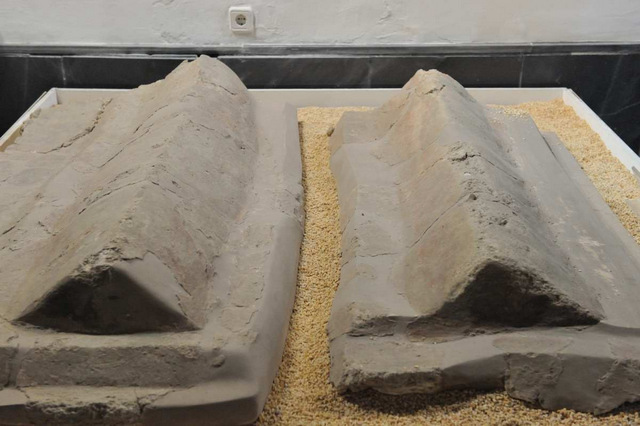 All of these exhibits are shown in side chapels and the nave of the old church, but perhaps the main attraction is a remarkable sculpture called “La Diablesa” or “El Triunfo de la Cruz”, which occupies the space once devoted to the altar. This piece was produced by Nicolás de Bussy in around 1695. De Bussy was from Strasbourg, but settled in the south-east of Spain, and most of his surviving works are to be found in the provinces of Murcia and Alicante.
All of these exhibits are shown in side chapels and the nave of the old church, but perhaps the main attraction is a remarkable sculpture called “La Diablesa” or “El Triunfo de la Cruz”, which occupies the space once devoted to the altar. This piece was produced by Nicolás de Bussy in around 1695. De Bussy was from Strasbourg, but settled in the south-east of Spain, and most of his surviving works are to be found in the provinces of Murcia and Alicante.
{image6}“La Diablesa” is an extraordinary collection of figures, including angels, a she-devil and a skeleton, full of baroque imagery designed to demonstrate how faith can overcome the evil intents of the Devil. It must be remembered that when this sculpture was created in the 17th century, most of the population were illiterate, and pieces like this were important to show the triumph of everlasting life over death, of good over evil, of abstinence over indulgence, in the most visible way possible, glorifying the power of the cross and giving an illiterate population a focal point for worship as well as engendering respect for the power of the church. The glory of this piece is in the detail, the silken folds of the clouds, the muscles on the body of the 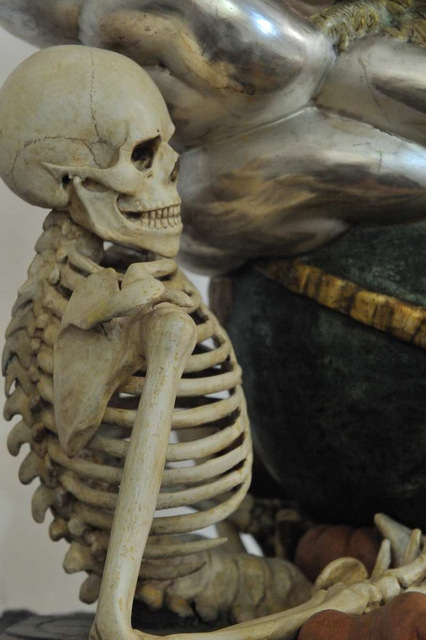 she devil, the world as it was known at this date, so look at it closely. Religious art tends in the minds of many to become stereotyped, but a visit to the archaeological museum would be worthwhile even if this were the only item in it, and it leaves the visitor lamenting the fact that so many of De Bussy’s works were lost or destroyed during the Civil War.
she devil, the world as it was known at this date, so look at it closely. Religious art tends in the minds of many to become stereotyped, but a visit to the archaeological museum would be worthwhile even if this were the only item in it, and it leaves the visitor lamenting the fact that so many of De Bussy’s works were lost or destroyed during the Civil War.
This sculpture still plays an important role in the Semana Santa parades in Orihuela, and is carried through the streets during the procession of the Santo Entierro del Cristo on Holy Saturday, accompanied by the Mayors of the rural districts of Orihuela, the torchbearers coming from the rural farming community on this one evening.
In the same building there is also an exhibition room which is used to host temporary art shows and cultural events.
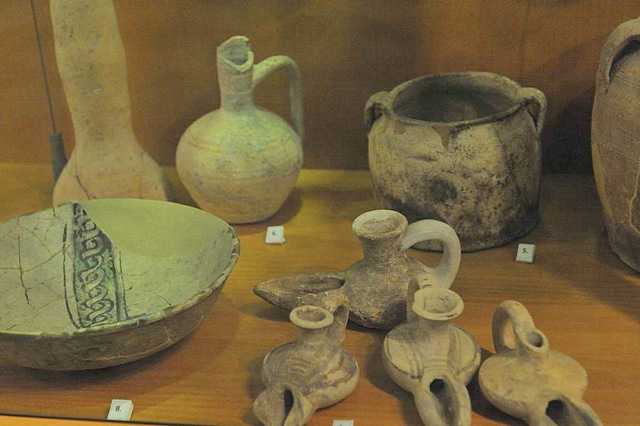 Opening hours of the museum:
Opening hours of the museum:
Tuesday to Saturday 10.00 to 14.00 and 17.00 to 20.00, Sundays and public holidays 10.00 to 14.00.
Closed on Mondays
Admission free of charge
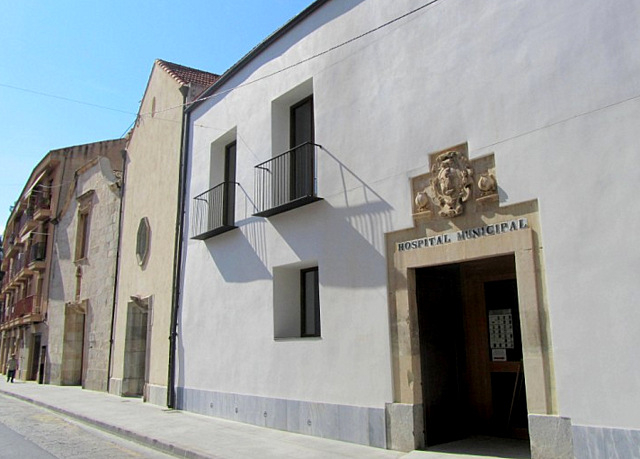 Location:
Location:
Calle Hospital , very close to the Town hall.
Click for map, Calle Hospital, Orihuela
It is possible to park in the centre of Orihuela, but in order to avoid “one way system” headaches it is probably easiest to leave vehicles at the Ociopia shopping centre on the western edge of town and walk through to the Plaza del Ayuntamiento in front of the town hall. The museum is less than a 1 minute walk from this location and is easy to find.
Those with an interest in history may enjoy reading a brief History of Orihuela to help put the finds into context.

































